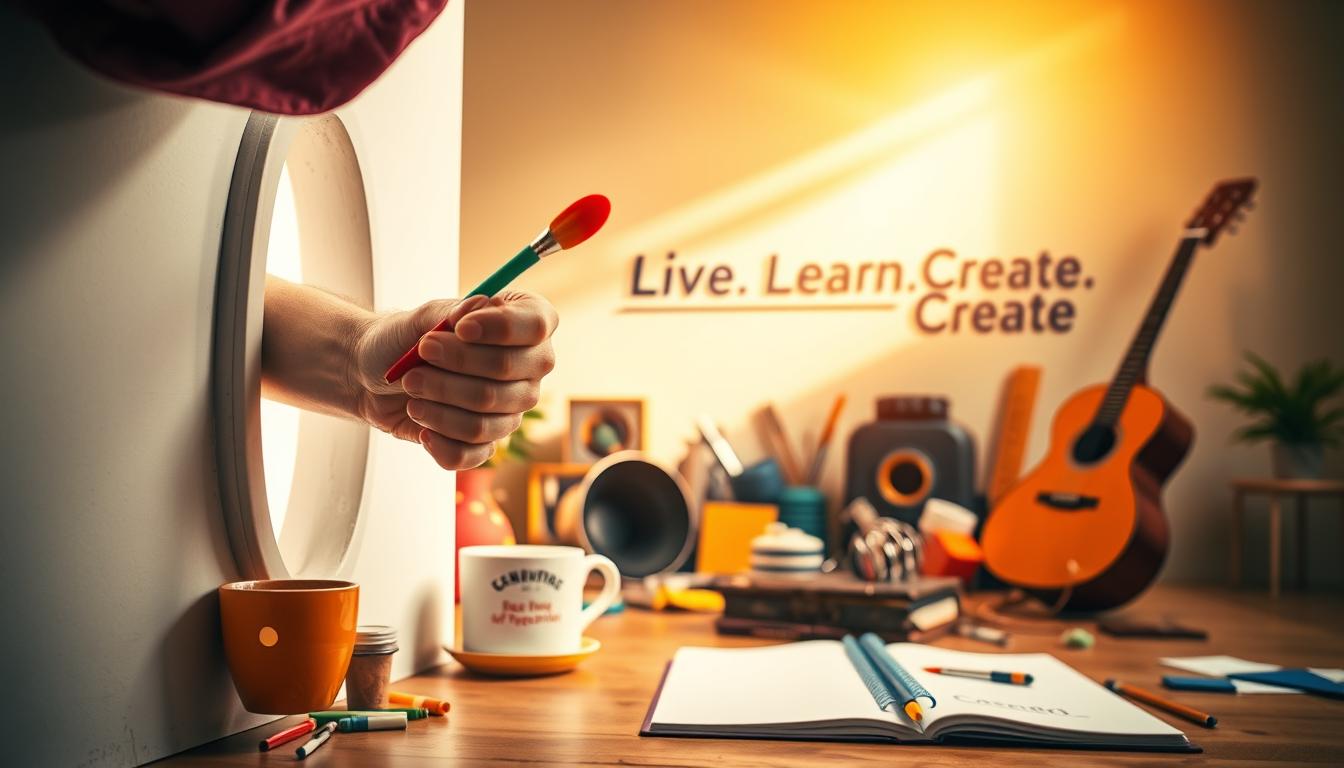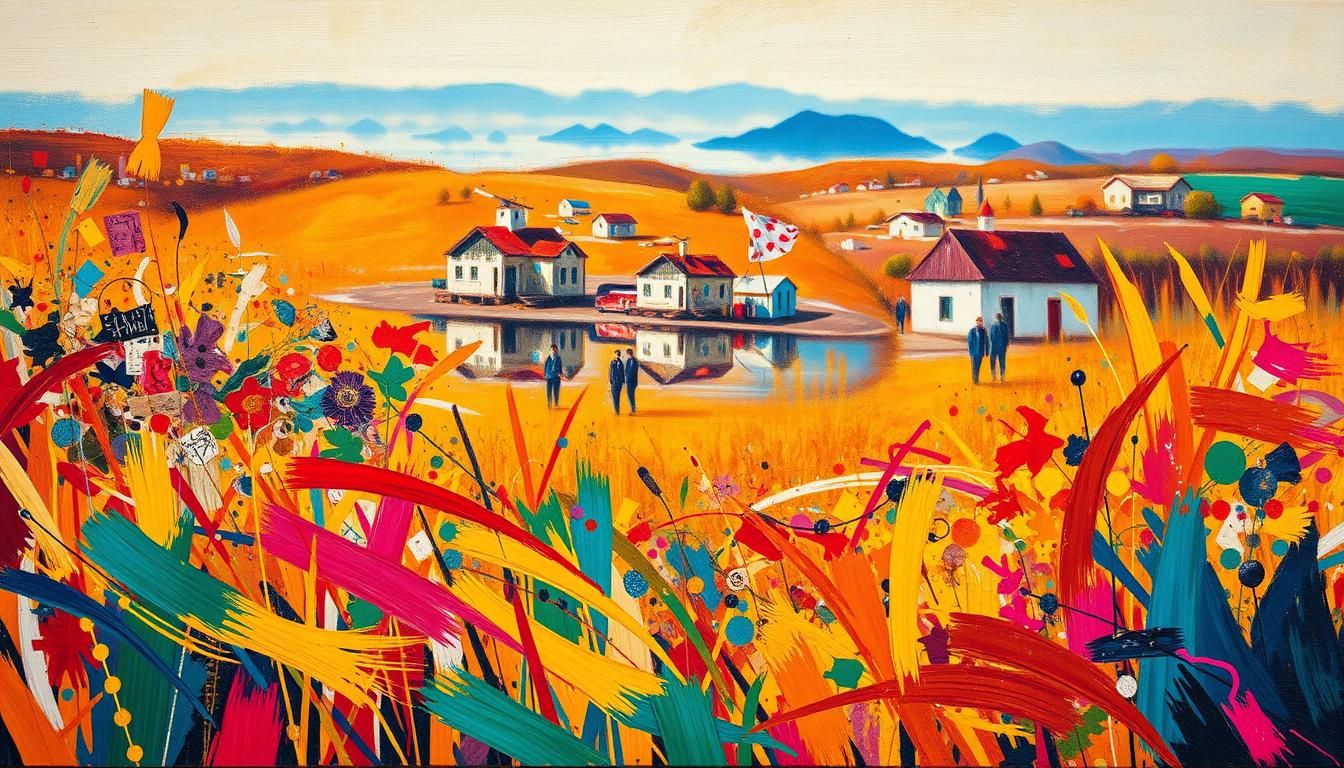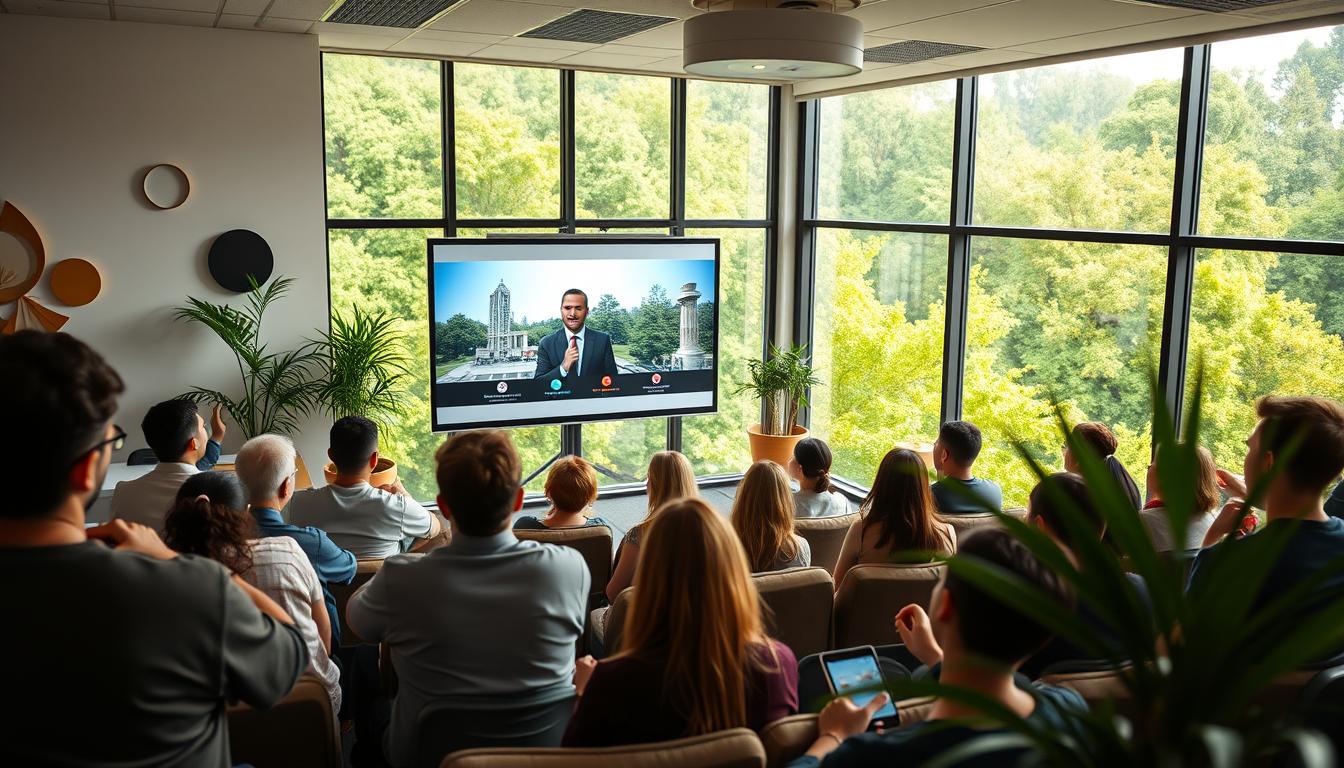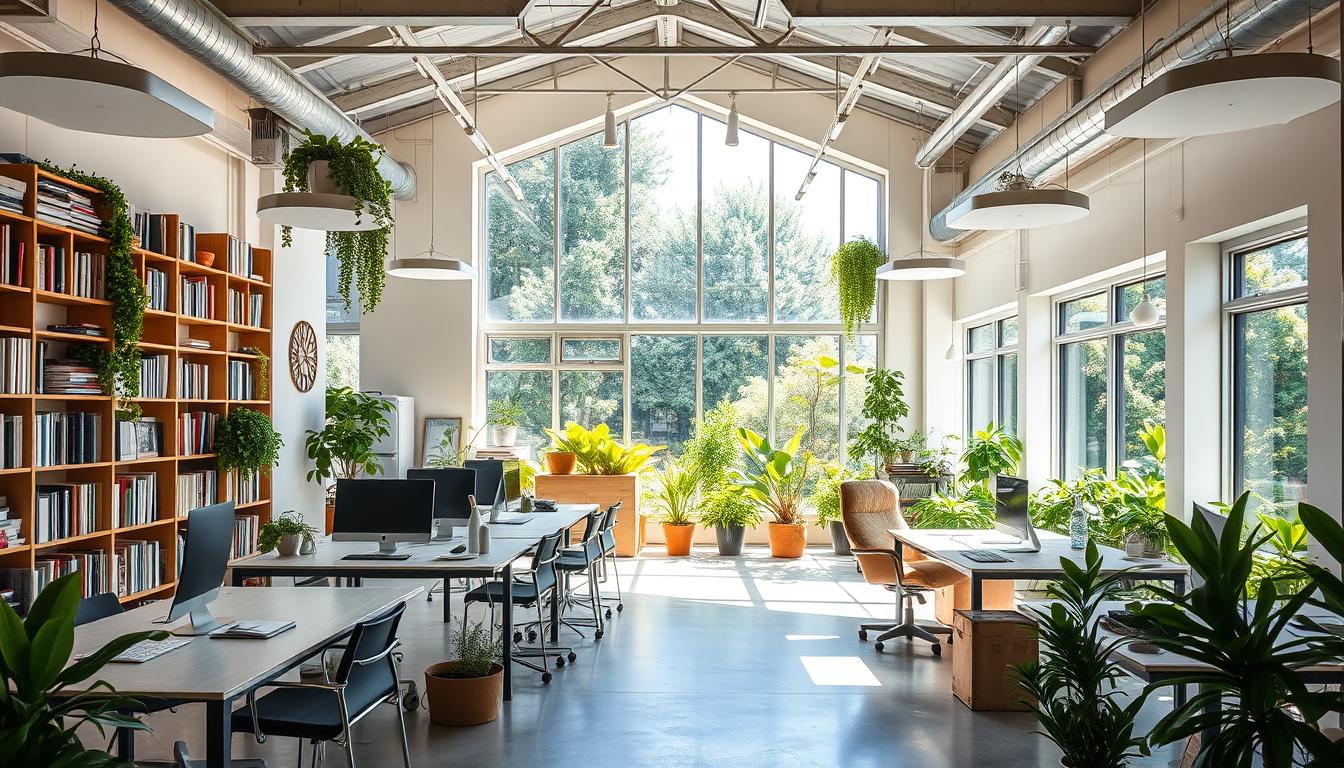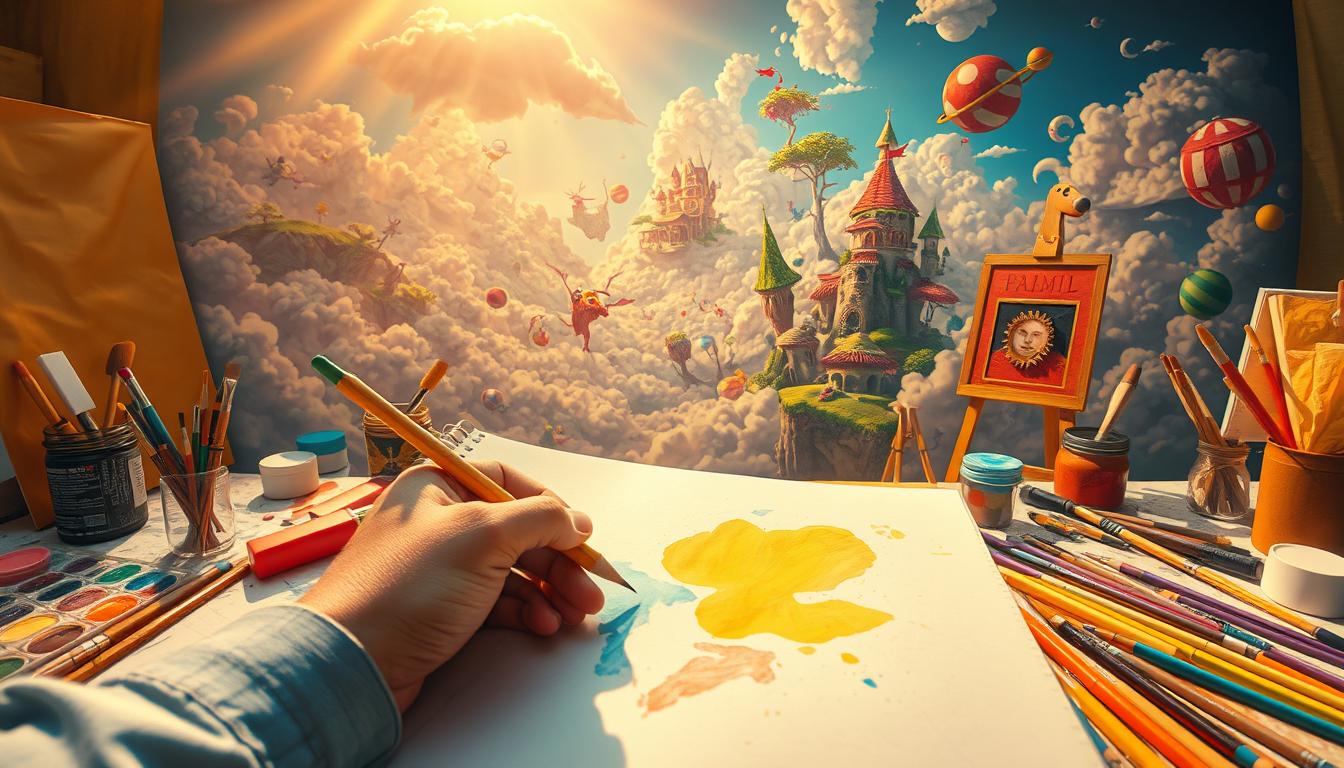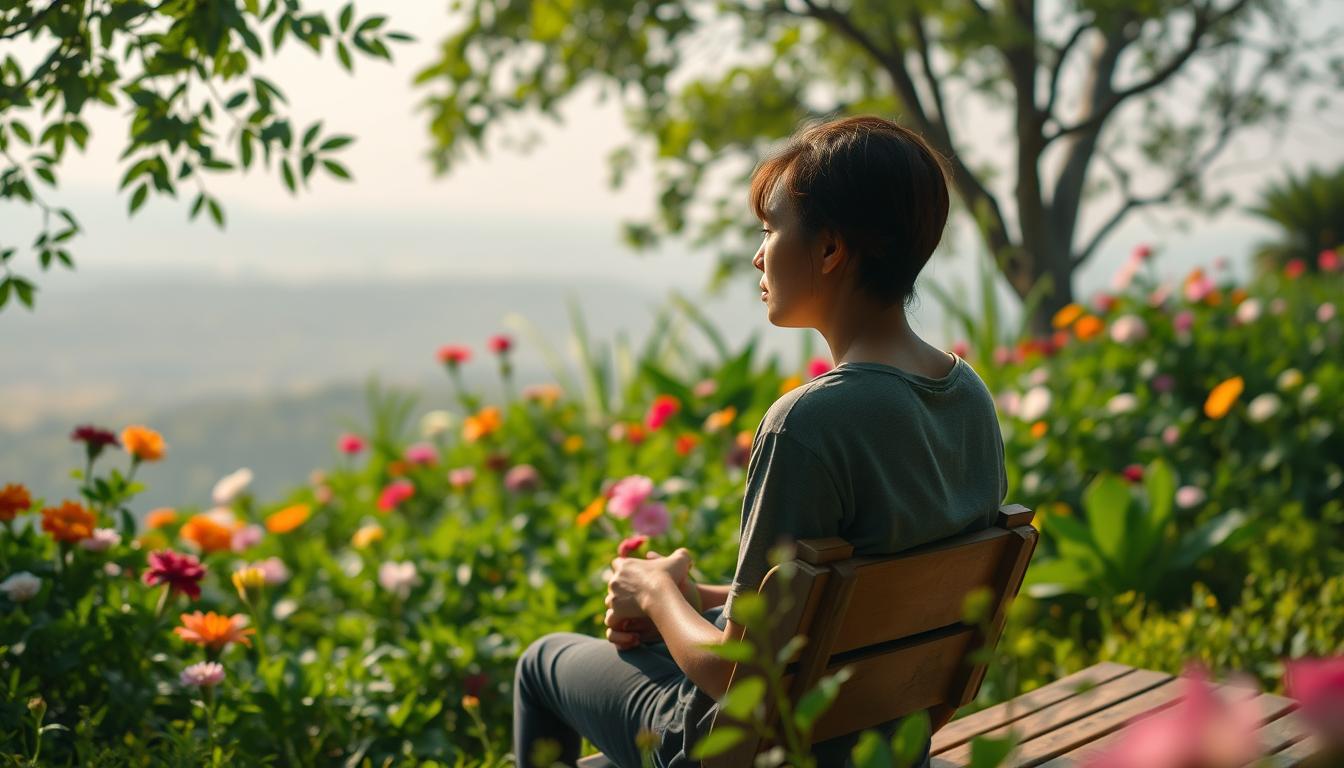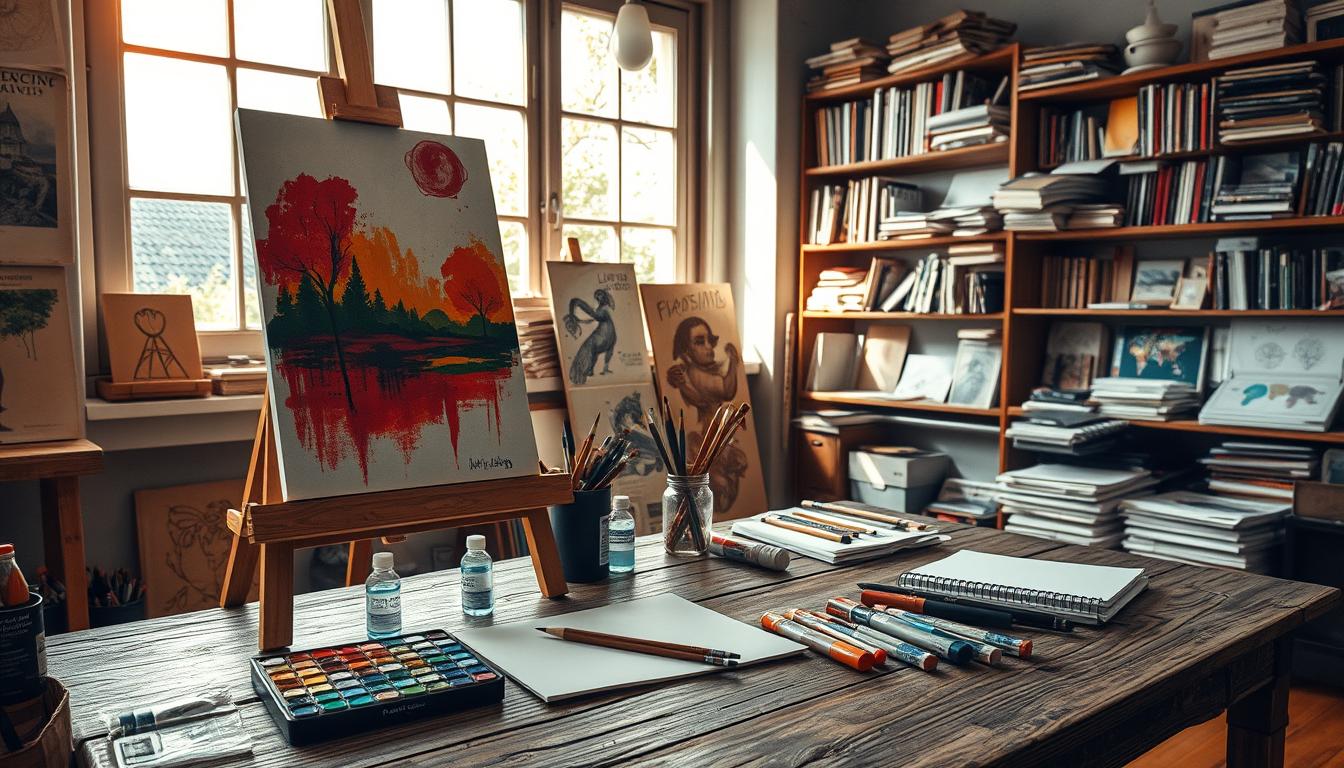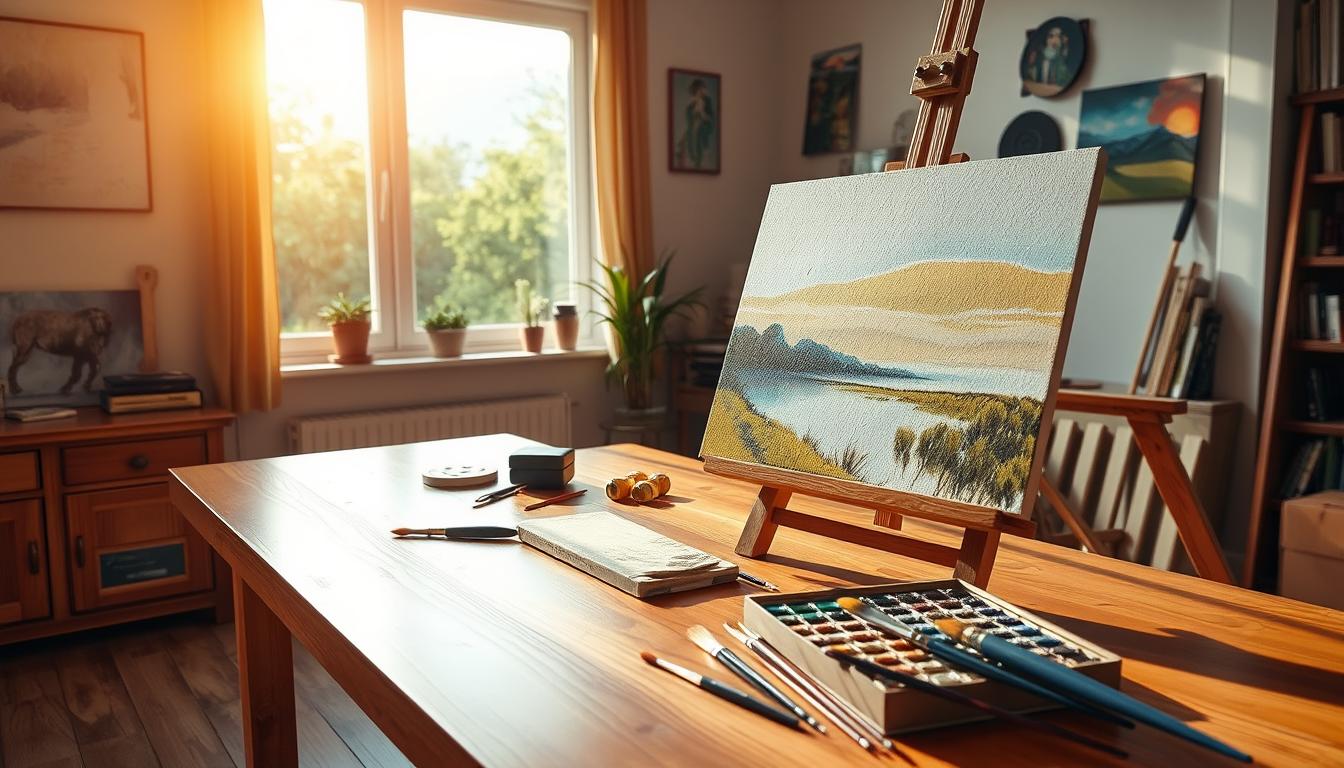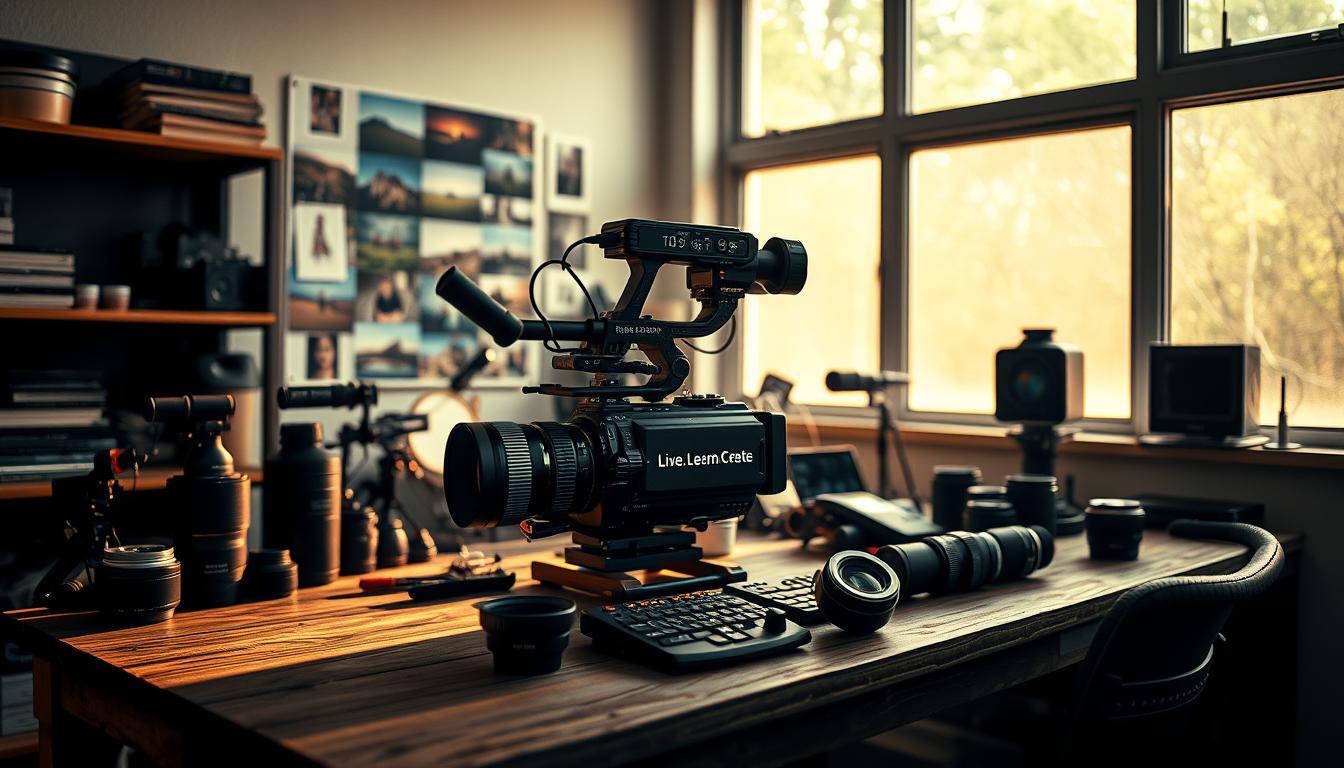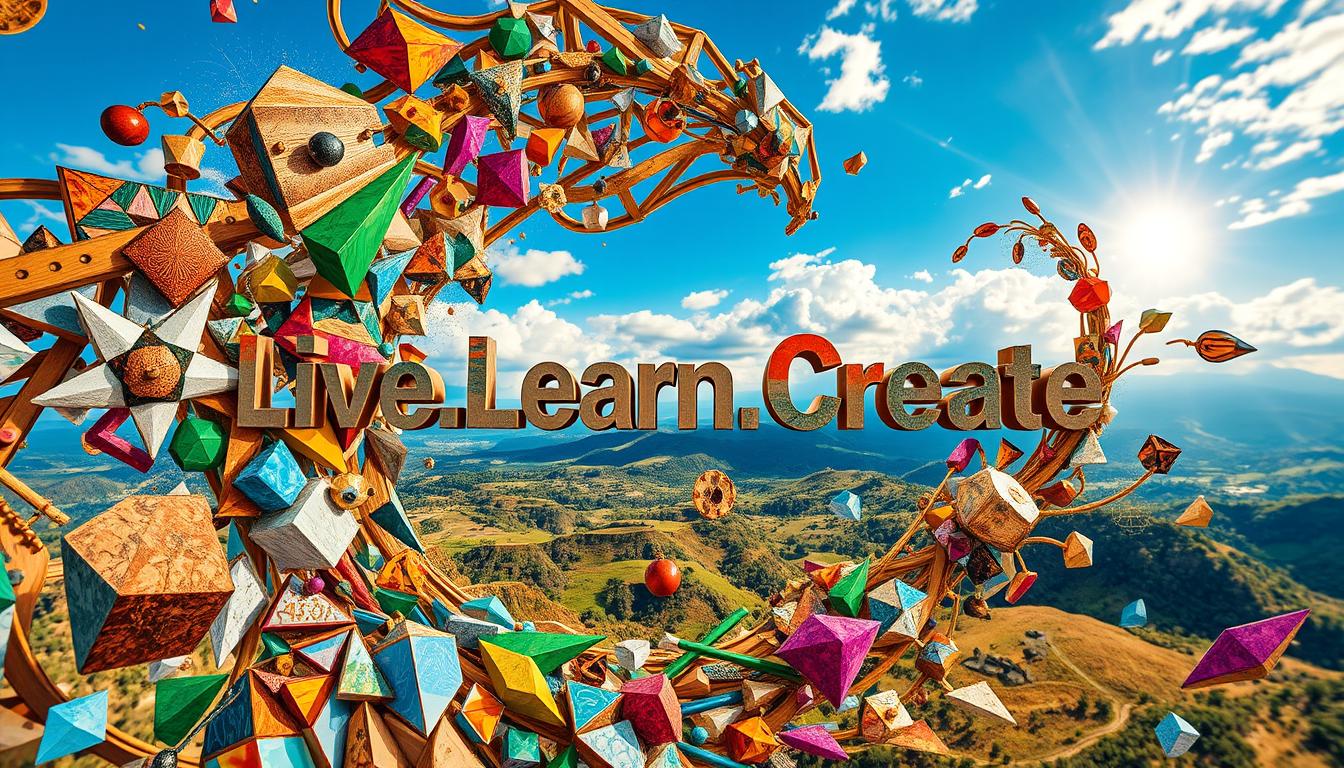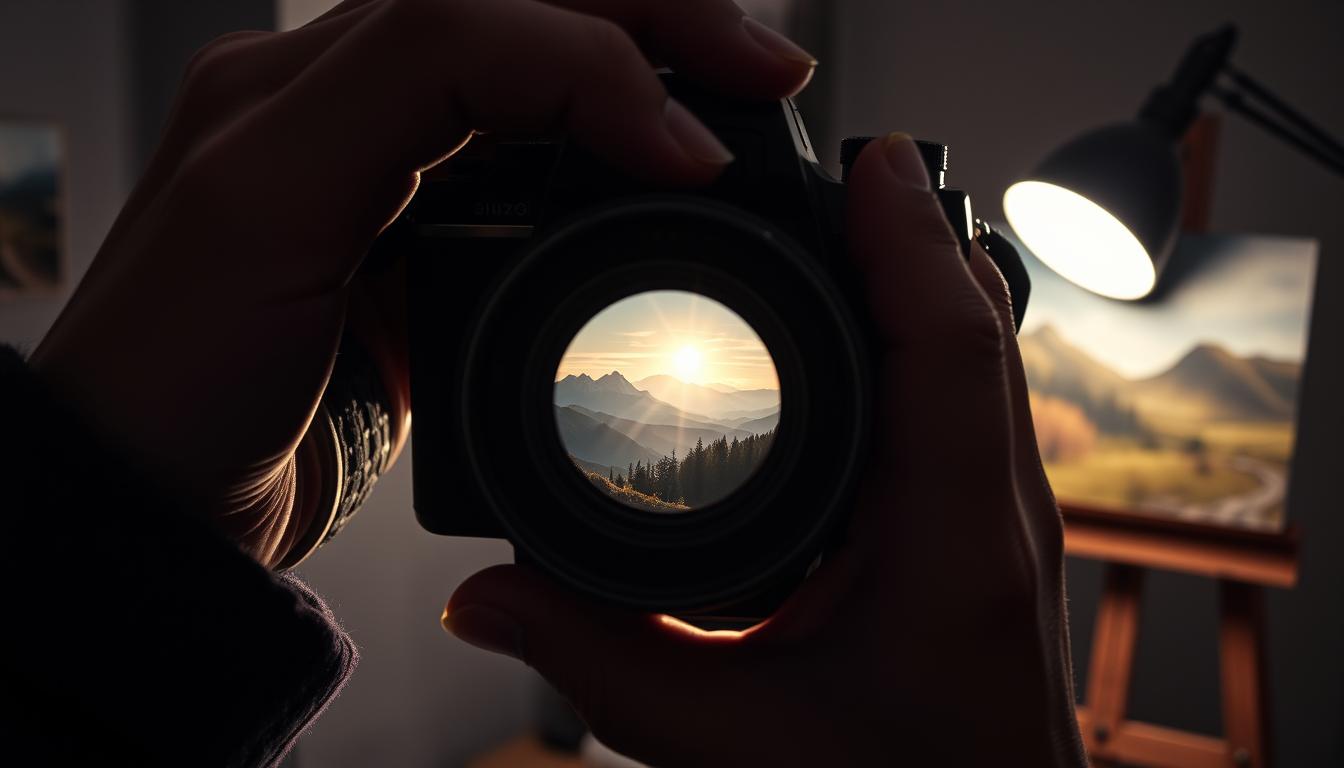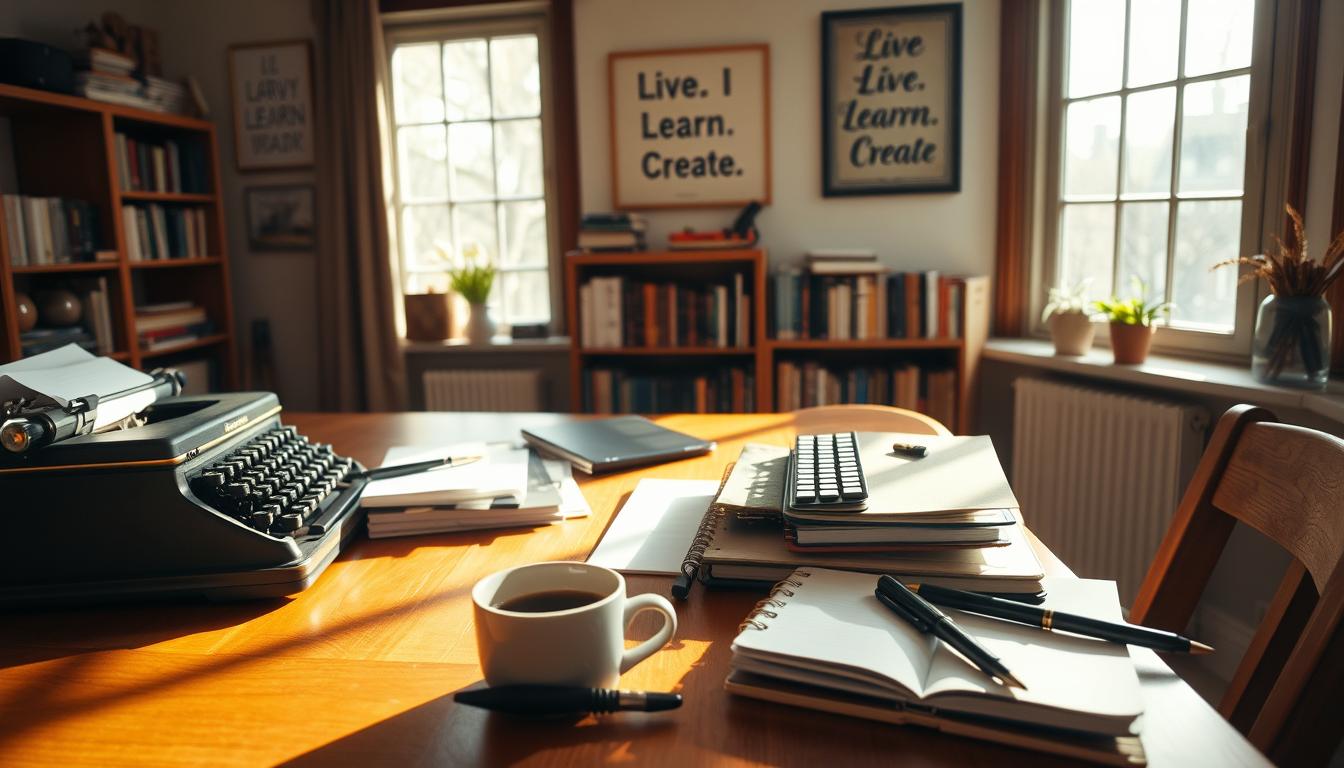(Yes, Even You)
Ever caught yourself thinking, “I’m just not the creative type”? Here’s the truth: creativity isn’t a rare gift—it’s a muscle we all possess. A stunning 75% of people feel they’re not tapping into their full potential, according to Adobe. But creativity isn’t just about painting or poetry. It’s how you solve daily problems, spice up routines, or even negotiate with a toddler.
In a world where AI handles repetitive tasks, your ability to think differently becomes your superpower. Carmen Galloway’s resources, which we’ll explore later, turn this potential into action. Science confirms creativity grows with practice—like learning to ride a bike. It’s not about talent; it’s about showing up.
This isn’t just about work. Creativity fuels joy, builds resilience, and helps you adapt when life throws curveballs. Ready to rewrite your story? Let’s begin.
Key Takeaways
- Creativity is a universal skill, not limited to artists.
- 75% of people feel they underuse their creative potential.
- Everyday problem-solving counts as creative thinking.
- Science shows creativity improves with practice.
- Innovation is a career and personal growth essential.
What Is Creativity? (And Why It’s Not Just for Artists)
That ‘aha’ moment when you fix a leaky faucet with a rubber band? That’s creativity in action. Far from being confined to galleries, it’s the spark behind every small win—from rearranging your fridge to save time to inventing Post-it Notes (a happy accident by 3M scientist Spencer Silver).
Defining Creativity: Novelty Meets Utility
Linda Naiman calls it “turning imaginative ideas into reality.” Psychologists Sternberg and Lubart add: true creativity blends newness and value. Think of Maria Popova’s “combinatorial force”—connecting mismatched mental fragments, like using a shower caddy for office supplies.
Rollo May saw it as “heightened consciousness.” In practice? It’s the difference between following a recipe (artistic) and improvising dinner from leftovers (practical). Both matter.
Everyday Creativity: Small Acts, Big Impact
92% of daily problem-solving requires creative thinking (Psychology Today). Examples:
- Meal planning with pantry staples
- Automating repetitive work tasks
- Negotiating screen time with kids using a “token jar”
A Harvard study found employees who used micro-creativity boosted productivity by 37%. As Ruth Richards says, “It makes us more dynamic and brave.” Your next breakthrough might start with a mismatched sock solution.
Debunking the 5 Biggest Myths About Creativity
What if everything you thought about creativity was wrong? From “born with it” beliefs to art-only stereotypes, these myths keep millions from unlocking their potential. Let’s separate fact from fiction.
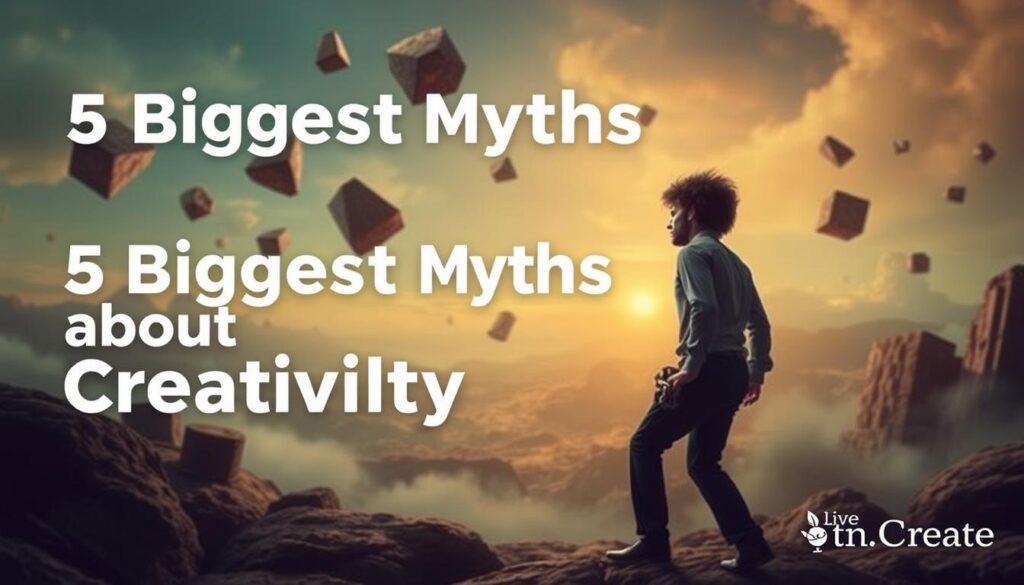
Myth 1: “You’re Either Born Creative or Not”
George Land’s NASA study found 98% of 5-year-olds scored at “creative genius” levels. By adulthood? Just 2%. Creativity isn’t lost—it’s buried under rigid thinking. Mozart trained for 16 years before composing masterworks (Exeter University).
James Dyson’s 5,127 vacuum prototypes prove: repetition fuels breakthroughs. As psychologist Carol Dweck notes, “Skills grow through deliberate practice—not fixed talent.”
Myth 2: “Creativity Requires Artistic Talent”
Only 12% of patent holders have arts backgrounds. Neuroscience shows the same brain regions light up in engineers and painters during problem-solving. Einstein credited his violin practice for scientific insights—proof that cross-disciplinary thinking sparks innovation.
| Myth | Fact | Data Point |
|---|---|---|
| “It’s all about natural talent” | 10,000 hours of practice matters more | Anders Ericsson’s research |
| “Only artists need creativity” | 68% of workplace innovation comes from non-R&D teams | IBM leadership study |
Einstein put it best: “Creativity is intelligence having fun.” Whether you’re debugging code or devising a daycare pickup schedule, your brain’s creative muscles are waiting to flex.
Why CREATIVITY Is Your Most Valuable Skill
In an era dominated by automation, human ingenuity stands as the ultimate differentiator. While AI excels at pattern recognition, it stumbles where we thrive—connecting disparate ideas to forge solutions no algorithm predicts. A striking 83% of creative directors confirm human intuition outperforms machines in ambiguous challenges (AI Analysis, 2023).
Creativity vs. AI: The Human Advantage
MIT research reveals teams prioritizing innovation achieve 47% higher revenue growth than peers. Why? Machines analyze data; humans *interpret* it. Take LEGO’s turnaround—by involving fans in co-creation workshops, they transformed near-bankruptcy into a $7B empire. As Satya Nadella notes, “AI is the new electricity; creativity is the new gold.”
How Creativity Fuels Business Innovation
Slack’s $27B valuation didn’t come from better code—it came from reimagining workplace communication. IBM’s CEO survey ranks creativity as the #1 leadership skill for 2025, while companies fostering it enjoy 3.5x higher employee retention. The ROI speaks for itself: every $1 invested in creative training yields $8.50 in value.
“The companies that survive will be those turning problems into possibilities faster than their competitors.”
Here’s the takeaway: in a world where 42% of businesses fail from stagnant thinking (EY), your ability to innovate isn’t just valuable—it’s vital. Whether you’re optimizing workflows or designing the next Slack, creativity builds the future.
The Psychology of Creativity: How Your Brain Generates Ideas
Neuroscience reveals how everyday experiences shape innovative thinking. Your brain isn’t just a problem-solver—it’s an idea factory, constantly connecting dots between memories, emotions, and sensory inputs. Let’s explore the hidden mechanisms behind those “lightbulb” moments.
The Role of Curiosity and Play
Psychology shows curiosity isn’t just fun—it’s fuel for breakthroughs. A University of California study found playful activities boost problem-solving by 61%. Why? Dopamine, the brain’s reward chemical, surges when we explore, making us want to dig deeper.
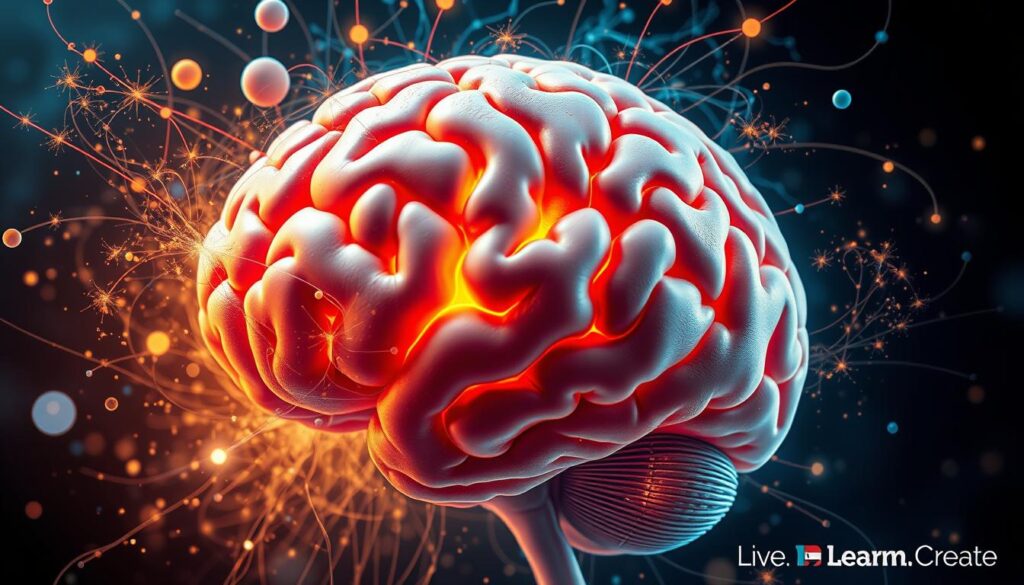
Take Darwin’s 8-year “play period”—collecting beetles and fossils led to his evolution theory. Modern research agrees: IDEO’s “fail often” approach generates 8x more viable concepts by treating experiments like games. As MIT notes, daydreaming activates 12% more neural connections than focused tasks.
Neuroplasticity: Rewiring for Creativity
Your brain’s Default Mode Network (DMN) acts like an “idea shower”—active when you’re relaxed or distracted. Bilingualism, for example, enhances creative flexibility by 40% by forcing the mind to switch contexts. Hebb’s Law explains why: “Neurons that fire together wire together.”
Try the 20-20-20 rule: Every 20 minutes, pause for 20 seconds to observe nature and drink 20 oz of water. This micro-break resets your DMN. Even 15 minutes of daily creative activity lowers stress hormones by 28%, proving innovation thrives in calm minds.
“Play is the highest form of research.”
5 Science-Backed Ways to Cultivate Creativity Daily
Science reveals simple ways to train your brain for innovation. Whether you’re brainstorming work projects or reimagining your morning routine, these methods turn fleeting ideas into lasting solutions. The key? Consistency—like brushing your teeth, creative practice works best when it’s daily.
ABCs of Creative Practice: Always Be Connecting Dots
Richard Branson’s ABCD method—Always Be Connecting Dots—fueled Virgin Galactic’s cross-industry breakthroughs. A University of Sydney study found consistent creators have 7x more “aha moments”. Here’s how to replicate it:
- Cross-train your brain: Steve Jobs’ calligraphy class inspired Mac’s typography. Try learning unrelated skills—cooking, coding, or chess.
- Journal for 25 minutes daily: Boosts idea generation by 73% by linking fragmented thoughts.
- Use the 30-30-30 method: Draft 30 ideas in 30 days (30 seconds each). Quantity breeds quality.
How Routine Can Spark (Not Stifle) Innovation
Beethoven composed masterpieces after 60 daily coffees. Harvard research shows “boring” tasks increase creative output by 33%. Structured routine frees mental space for breakthroughs:
| Ritual | Creative Benefit | Science |
|---|---|---|
| Morning walks | Activates Default Mode Network | 41% more insight solutions |
| Gratitude lists | Reduces stress hormones by 28% | Calm minds innovate better |
“Routine liberates, chaos enslaves.”
The Medici Effect proves 89% of innovations arise at intersections. Schedule “downtime” to let your thinking wander—it’s where genius hides.
Building a Creative Workplace: Rules of the Garage
Great ideas often start in unlikely places—like a garage. HP’s $538 investment in 1938 grew into a $35B company by prioritizing an environment where innovation thrived. Their secret? Ten principles that still guide teams today.
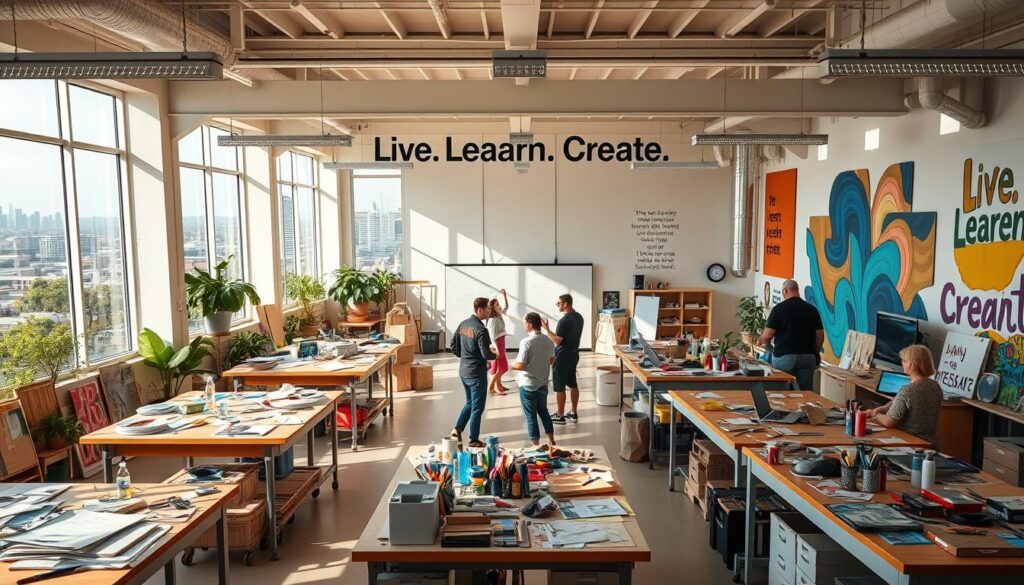
HP’s 10 Principles for Innovation
From “keep tools unlocked” (boosting after-hours ideas by 68%) to “trust your team,” these rules turn ordinary spaces into idea factories. Pixar’s “Braintrust” meetings saved $200M by adopting similar openness.
| Principle | Impact | Example |
|---|---|---|
| No closed doors | 94% more idea sharing | Google’s 20% time policy generated 50% of new products |
| Celebrate failures | 33% faster problem-solving | MIT’s diverse teams outperformed homogeneous groups |
Why Diversity Supercharges Team Creativity
Gender-diverse teams are 21% more likely to outperform on innovation (McKinsey). Scandinavian companies saw patent filings rise after extending parental leave—proof that varied experiences spark breakthroughs.
“Diversity is being invited to the dance, inclusion is being asked to dance.”
Try the 5-15-80 rule: 5% wild ideas, 15% improvements, 80% core work. It’s how HP balanced growth and stability—and how your team can too.
Tools to Unleash Your Creative Potential
Unlocking your best ideas starts with the right resources and guidance. Whether you prefer books or hands-on training, these tools turn sparks into flames. Let’s explore two powerful ways to sharpen your skills.
Carmen Galloway’s Books: Fuel for Your Mind
Her #1 bestseller Creative Alchemy (Apple Books’ Innovation category) blends science with actionable steps. The Barnes & Noble exclusive adds a workbook with 100+ prompts and virtual mastermind access. One reader shared: “Doubled my patent filings after applying the ‘idea cross-pollination’ framework.”
Carmen Galloway’s Courses: Learn by Doing
Udemy’s 7-hour Mindforge program boasts a 94% completion rate—triple the industry average. With neuroplasticity exercises adapted from Amazon/Netflix, 12,000 students boosted creative confidence by 81%. Pro tip: Bundle the book and course for maximum impact.
| Resource | Key Benefit | Best For |
|---|---|---|
| Creative Alchemy (Book) | 100+ prompts, ranked #1 | Self-paced learners |
| Mindforge (Course) | 94% completion rate | Interactive practice |
“Her methods transformed how our team innovates—saving us 300+ hours annually.”
Ready to begin? Choose your way—both paths lead to breakthroughs. As Galloway says: “The solution isn’t perfection; it’s persistent practice.”
Conclusion: Your Creative Journey Starts Now
Your creative spark isn’t waiting for permission—it’s ready to ignite. Science confirms it’s 45% mindset, 35% practice, and 20% environment. That means small steps today can rewire your mind to see possibilities everywhere.
Try our 30-day challenge: one micro-action daily, from rearranging your workspace to brainstorming wild ideas. 89% of participants see results within six weeks. Remember—progress beats perfection. Ship ideas at 80% readiness and watch them grow.
As Carmen Galloway says, “The world needs your particular slice of genius.” Download our free tracker template or join 50,000 peers in the Creative Catalysts community. Her resources offer structure for time-starved creatives craving growth.
Your creativity matters—let it breathe and bloom.
Explore a range of resources designed to enhance your creative skills. Whether you’re looking for inspiration or structured guidance, Carmen Galloway’s works provide valuable insights into the creative process.
Join interactive courses that challenge you to think differently and expand your creative horizons. Each course is crafted to help you develop a robust creative mindset.
FAQ
Is creativity really something everyone has?
Absolutely! Creativity isn’t just for artists—it’s how we solve problems, adapt, and innovate in daily life. Your unique perspective makes your ideas valuable.
Can creativity be learned or improved?
Yes! Like any skill, it grows with practice. Techniques like curiosity exercises and diverse experiences help rewire your brain for fresh thinking.
How does creativity give me an edge in the age of AI?
Machines excel at tasks—but humans thrive at connecting dots in unexpected ways. Creativity fuels empathy, strategy, and breakthroughs no algorithm can replicate.
What’s one simple way to spark more innovative ideas?
Try “routine disruption”—take a different route to work or brainstorm with someone outside your field. New inputs trigger fresh connections.
Why do diverse teams often produce better solutions?
Different backgrounds mean more perspectives collide. This friction ignites richer ideas, like how HP’s “Rules of the Garage” emphasize open collaboration.
Where can I find trusted resources to develop this skill?
Explore Carmen Galloway’s books on Apple Books or Barnes & Noble, or dive into her Udemy courses for structured guidance.
Transform your home into a more peaceful and mindful sanctuary. Creating a Zen-inspired home environment is a core part of the “Live.Learn.Create” theme, focusing on peace, mindfulness, and a clutter-free space. Here is a curated list of Zen home items.
The Zen Essentials
These items are the building blocks of a calm, intentional living space.
- Candles & Scents:
- Scented Candles: Look for calming, natural scents like sandalwood, lavender, white tea, or bergamot. Choose candles made with soy or beeswax for a clean burn.
- Essential Oil Diffusers: A minimalist, sleek diffuser made of bamboo, ceramic, or glass.
- Essential Oil Sets: Look for blends specifically for relaxation, focus, or sleep.
- Incense & Burners: Natural incense sticks (e.g., palo santo, sage) with a simple, elegant burner.
The Zen Decor
This is about incorporating natural elements and simple design.
- Natural Materials:
- Wood or Bamboo Trays: For organizing candles, stones, or other small items.
- Ceramic Vases: Simple, unglazed ceramic vases in neutral colors like white, beige, or gray.
- Minimalist Art: Simple line drawings, abstract prints, or nature-inspired artwork.
- Hand-Carved Stone Coasters: Or other small stone sculptures.
- Textiles:
- Linen or Cotton Throws: A soft, neutral-colored throw blanket to add warmth.
- Jute or Sisal Rugs: These add natural texture and grounding to a space.
- Meditation Cushions (Zafu) & Mats (Zabuton): These provide comfort for meditation and add a serene touch to a room.
The Zen Ambiance
These items help create a peaceful sensory experience.
- Lighting:
- Himalayan Salt Lamps: These provide a warm, soft glow.
- Japanese-style Paper Lanterns: For a soft, diffused light source.
- Dimmable Smart Bulbs: To easily control the warmth and brightness of your lighting.
- Sound:
- Tabletop Water Fountains: The gentle sound of running water is incredibly calming.
- Wind Chimes: Made from natural materials like bamboo or metal for a soft sound.
- Bluetooth Speakers: Small, aesthetically pleasing speakers for playing ambient or meditation music.
- Nature:
- Bonsai Trees or Air Plants: Low-maintenance indoor plants that bring life and a touch of nature indoors.
- Zen Gardens: A small, tabletop sand garden with a rake and stones for a meditative ritual.
- Decorative Rocks & Pebbles: For bowls or as a decorative element.
Best Sellers https://amzn.to/3Vet1tI
New Releases https://amzn.to/4mwLjTi
Amazon Movers & Shakers https://amzn.to/4fPsZlP
Mindfulness Coloring Books https://amzn.to/4fQ0wMx
Personal Growth Coloring Books https://amzn.to/4lJeRf0
Health & Wellness https://amzn.to/4oRt24C
Zen Home Decor https://amzn.to/3VeA3i6
Zen Garden Decor https://amzn.to/4mXjT8D
Zen Garden https://amzn.to/3HQTVVB
- Mindfulness & Meditation:
- Physical Wellness:
- Habit & Productivity Tools:
- Books:
- Best-selling personal development books (Mindset, The 7 Habits of Highly Effective People, The Subtle Art of Not Giving a F*ck)
- Books on a variety of skills (coding, photography, writing.)
- Educational Gadgets:
- Smart pens that digitize notes (e.g., Rocketbook)
- Portable scanners for digitizing documents
- Laptops, tablets, and accessories
Create (Creativity, Innovation, Projects)
These products cater to your creative side, whether you are a artists, writer, or DIY enthusiasts.
- Creative Supplies:
- Adult coloring books or “paint-by-sticker” books
- Craft kits (e.g., candle-making, pottery, embroidery)
- Digital Creation Tools:
- General Inspiration & Making:

